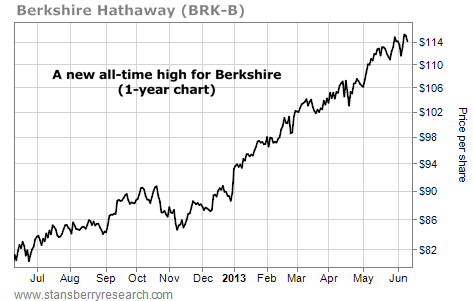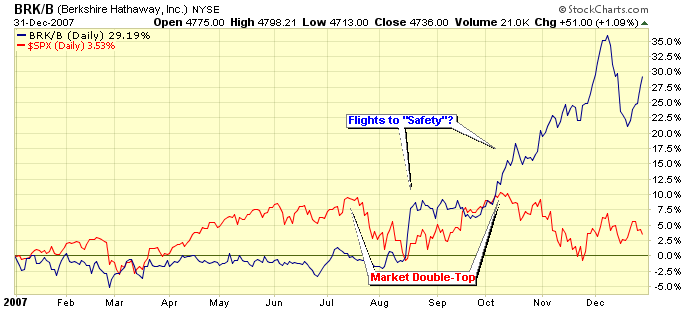History of Berkshire Hathaway
Post on: 22 Июнь, 2015 No Comment

January 21st, 2013
The years before Warren Buffett
We all know that the prime investment vehicle for Warren Buffett is Berkshire Hathaway, situated in Omaha, Nebraska, but what is Berkshire Hathaway and how did Buffett get involved?
The Hathaway Manufacturing Company was started in 1888 by Horatio Hathaway, a China trader, with profits from whaling in the Pacific. The business of the company was to mill cotton and it made big profits until the start of the decline of the cotton industry after World War 1.
Seabury Stanton, who put much of his own money into the company to keep it going, ran it during these years.
After the Depression, the company once again came into boom years, with off years from time to time. In the 1950s, Stanton decided to merge the company with Berkshire Fine Spinning Associates Inc, a milling company that had operated since the early 19 th century.
The merged company was huge, with 15 plants, over 12000 employees and revenue of over 120 million dollars. Its headquarters were in New Bedford.
Seabury Stanton was a miller and a manager with the overriding aim of keeping the business going but he was not a financial expert and he continued to plough back most of the company’s earnings into working capital, despite ever decreasing cotton prices, resulting from increased competition at home and abroad.
There was internal division in the company between the old stylers and those who wanted to get involved in emerging products.
By the end of the 1950s, the company had closed seven of its plants and laid off a large number of workers. Its stock price had fallen and many analysists had written it off.
In 1962, Buffett started to buy shares in the company, believing that its then price was substantially below its intrinsic value. By 1963, Warren Buffett and his associates were the largest stockholders and Buffett began to take a more active interest in the company. There was increasing dissension between him and Jack Stanton who had taken over the leadership of the company from his father.
Buffett gradually increased his shareholding to 49 per cent and used his votes to change the management of the company. He became Chairman of the executive committee and installed Ken Chace as President to run it. Buffett would leave the milling operations of the company to the new President; he would concern himself with the financial structure of the company.
It is interesting to see that, even at this stage of his life, Buffett would not entertain a stock option package for the executive team. He was prepared to pay good salaries with incentives, provide loans to allow executives to buy shares in the company, but no stock options. There was to be no free ride for the management team.
By now, the shares that Buffett had bought at an average cost of about $15 were worth $18 a share and the company had only two operative mills left. Only 2300 employees remained.
From textiles to insurance
After Warren Buffett took control of Berkshire Hathaway, the company operated in dual roles. First, it maintained its core business of textiles; secondly, Buffett gradually began to use it as an investment vehicle.

As far as textiles were concerned, Buffett realised the difficulties and future problems for textile mills but for various reasons persevered, apparently for altruistic and non-altruistic reasons. He recognised that closure of the plants would cause job losses and community disfunction but also thought that he could operate the business profitably. He said that he would not shut down a business with lower than average profits just to add a small portion to business returns.
However as time passed, Buffett realised that the business was in trouble from increasing foreign competition and high structural costs. The end was near. In 1985, the company discontinued its historic role in the textile business. Even Warren Buffett could not turn around a company whose business operations had become structurally unprofitable.
In about 1967, Buffett turned the company’s eyes towards the insurance business, negotiating the purchase of two Nebraska companies, National Indemnity and National Fire and Marine Insurance. Now the insurance business is risky, subject to strong competitive forces, and strongly reliant on astute management. Why would an investor like Buffett exchange one type of commodity business (textiles) for another?
The reason is that insurance companies charge premiums against a risk that may or may not eventuate, generating large amounts of cash that lie about looking for something to do. This allows the insurance company to invest spare monies to gain further profits over and above that generated by the insurance business itself. However, the investments need to be in liquid assets that can be realised when and if necessary to pay claims. The prime market for liquid investment is stocks and bonds.
There is also another factor, as Buffett knew. If an insurance company is financially strong, customers and agents of that insurance company will have confidence in its ability to pay claims, allowing the company to remain vibrant and viable even when insurance margins are falling through increased competition or larger than usual claim years.
Buffett also maintained a policy in the companies that concentrated on premium safety rather than in volume of business. If the premiums had a sound basis, the companies would do as much business at those prices as it could. If the prices were not rational, the company would not write the business and it was irrelevant if volumes dropped off. If customers chose to buy elsewhere that was up to them.
If you think about it, this is just a variation of Buffett’s concept of, if necessary, waiting forever to buy a share at the right price.
This first investment in insurance was the start of Berkshire Hathaway’s rise to the investment legend it has become today. In a few years, Berkshire Hathaway would acquire GEICO General Insurance Company. which would add to Buffett’s profits through both insurance premiums and the huge cash flow that would allow further stock investments.














